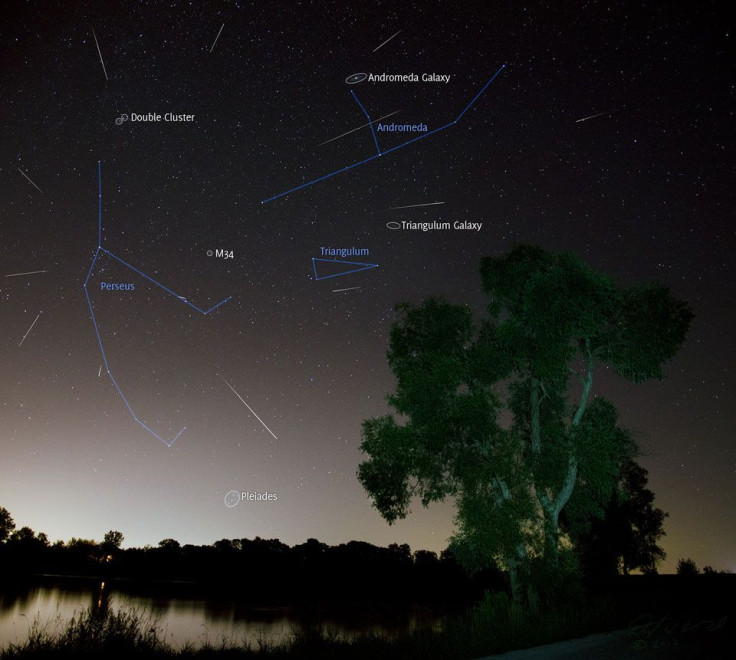When Is Perseid Meteor Shower? Where, How To See It This Weekend

There is a meteor shower likely coming to the sky near you this weekend, think of it as a sky watching warm up for the Aug. 21 eclipse. You may have heard that the upcoming Perseid Meteor Shower is going to blow all of its predecessors out of the water, with thousands of meteors per hour, but that’s simply false, says NASA.
While the Persied meteor shower will be worth checking out, it will probably bring around 150 meteors per hour, many of which will be washed out by the bright moon that will still be more than 60 percent full during the peak of the shower.
Read: Eclipse 2017 Eye Health, What Happens If You Look At Sun, Eclipse
The Perseids actually never reach storm level, meaning thousands of meteors an hour, says NASA. At best they can burst and drop up to a few hundred in an hour. So while viewers will have a chance to see the meteors they shouldn’t expect anything record breaking.
When Is The Best Time To See Persied Meteor Shower?
The shower has been occurring since mid July and will continue until late August but it peaks between Aug. 11 - 13. The best time to spot the meteors will be on those days during the darkest hours just after midnight through just before dawn. The moon won’t set during the night time, so there’s no way around the light pollution it will give off.
The Perseid meteor shower originates from the comet 109P/Swift-Tuttle. The comet only orbits the sun every 133 years but when it does it leaves a trail of dust and small debris behind it. When the Earth passes through that trail, every August, that debris enters Earth’s atmosphere and burns up creating the comets and putting on a show.
Read: Cassini Grand Finale: Spacecraft Beginning Its Final Five Flybys Of Saturn's Atmosphere
The Perseid appear to be coming from the constellation Perseus, this area is called the radiant because the meteors appear to radiate from it. This will be located in the north-east part of the sky for viewers in the Northern Hemisphere. Look between here and the part of the sky directly above you. Give your eyes some time to adjust to the darkness, about half an hour should be good, and try to be on your back or in a chair looking up, take in as much of the sky as possible.
Good weather and clear skies will increase your chances of catching a good glimpse. So will getting away from any light pollution from a city or town nearby. You can also use a visor or baseball hat to help block glare from the moon if you wear it sideways, suggests NASA. Try to be patient and keep a close eye on the sky and you’ll probably get to make more than one wish on one of the meteors/shooting stars.
© Copyright IBTimes 2024. All rights reserved.





















